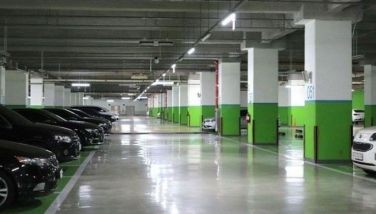Bioremediation stakeholders to gather in national gab
MANILA, Philippines – Cognizant of the imminent danger toxic waste and hazardous wastes pose to the environment, the National Academy of Science and Technology, in collaboration with the University of the Philippines Los Banos, is gearing up for a long overdue gathering of bioremediation stakeholders. The First National Conference on Bioremediation will be held at the Trader’s Hotel in Roxas Blvd, Pasay City on 26-27 October 2010, with the Department of Science and Technology (DOST), through the Philippine Council for Advanced Science and Technology Research and Development (PCASTRD), as the main sponsor and the Philippine Council for Industry and Energy Research and Development (PCIERD), Sagittarius Mining Company, Inc. and Blacksmith Institute as co-sponsors.
This national conference, a first of its kind, emerged as a necessity after it became apparent to members of the NAST Task Force and other stakeholders, meeting in a series of workshops and round table discussions, that bioremediation is a cheaper and more sustainable approach to pollution abatement. Bioremediation, by definition, is the use of biological entities, such as plants and microorganisms, or bioprocesses, to detoxify or degrade environmental pollutants to concentrations recognized as safe by regulatory agencies. As bioremediation research continues, the latest developments need to be shared and applied as fast and as efficiently as it is possible in a desperate race to protect our environment. A multidisciplinary gathering of ecologists, environmental engineers and chemists, management professionals, local government units and concerned industries is certainly a crucial step if we are to win this race.
Studies conducted in the Philippines have shown that some microbes are capable of degrading pollutants to nonhazardous products or to safe levels. Microbes that can degrade dyes and phenols and absorb toxic heavy metals have been reported in various fora and conferences. Accounts on these microbes have also been published in scientific journals. Microbes have the advantage of being versatile on account of their ability to utilize successfully existing substrate for their growth. They vary, however, in their capability to degrade or transform these substrates. Many current studies have not progressed to the point that would allow the development of technologies that can be transferred to industries and environmentalists.
Nagging questions have arisen beyond the confirmation that microbes indeed have the capability to degrade or transform pollutants. Whether the system works in situ is not guaranteed and even if it does, the following issues can be raised: What should be done with the sludge that contains the biodegraded compounds with the organism especially if these are persistent organic pollutants? How does one maintain the level of the microbial bioremediators? How will the growth of these microbes be stimulated and accelerate the detoxification of the pollutants under consideration? Microbial-based bioremediation is not readily acceptable as other approaches not utilizing microbes that do not lend themselves to easy ocular inspection.
Phytoremediation is an easier approach to adopt as plants are ubiquitous and results oftentimes are tangible. The search for metal-resistant plants has so far discovered a number of indigenous species exhibiting tolerance to toxic concentrations of heavy metals. However, a systematic monitoring to detect the reduction of concentration of pollutants, indicating the effectiveness of these plants, has yet to be developed. Moreover, the mechanism of action, either as absorption or as tolerance, has still to be elucidated in certain cases. The fate of plants that absorb heavy metals and other pollutants is an aspect of inquiry that needs to be addressed.
Some government agencies have apparently been successful in growing plants in heavily polluted areas like abandoned mining areas but in many cases, evidences showing a decrease in concentrations of pollutants have yet to emerge. Encouragingly, some companies reportedly have established their own phytoremediation practices. It would be ideal if the best practices of these companies are presented during a conference and subsequently a protocol of phytoremediaton and/or microbial bioremediation is established.
Accordingly, this First National Bioremediation Conference provides a major interdisciplinary venue for presenting new approaches on relevant areas of bioremediation technology and for building collaborations and linkages with scientists and institutions involved in complementary research in this area and in related fields. It makes possible, likewise, the creation of a national agenda on bioremediation whose specific objective is rehabilitation of damaged environments and management of recalcitrant wastes.
The main plenary session speakers are: Dr. Augustine Doronilla of the University of Melbourne on Phytoremediation Research to Mitigate the Impacts of Mining: the Australian Experience, Engr. Rowland Hall of the Blacksmith Institute on Microbial Bioremediation of Persistent Organic Pollutants, Dr. Lynn Panganiban of U.P. Manila on the Health Aspects of Pollution, Prof. Emerlinda Mendoza of the UP Los Baños on Human Ecological Imperatives of Bioremediation for Toxic Material Pollution, Dr. Rex Sadaba of UP Visayas on Bioremediation of Oil Spills, Dr. Carlos P. David of UP Diliman on Heavy Metal Sequestration of Biologic Materials: Potential Applications in Mine Rehabilitation and Dr. Sandeep Sudhakar Joshi of Shristi Eco-Research Institute, India on Ecotechnological Systems for Restoration of Polluted Rivers and Lakes, Dr. Nina Cadiz of UPLB on Bioremediation Efforts in on Abandoned Mine Area : The Mogpog Experience, Prof. Marlo Mendoza of UPLB and Blacksmith Institute on Clean-Up Strategies for Toxic Heavy Metals in River Ways and Dr.Marco Nemesio Montano of U.P. Diliman on Philippine Seaweeds as Bioremediation Agents. Secretary Ramon JP Paje of the Department of Environment and Natural Resources has accepted the invitation to be the keynote speaker.
For details, log onto: http://nabiotem.uplb.edu.ph or email:[email protected]. Interested parties are encouraged to register ahead of time in order to be assured of a slot.
- Latest
- Trending






























